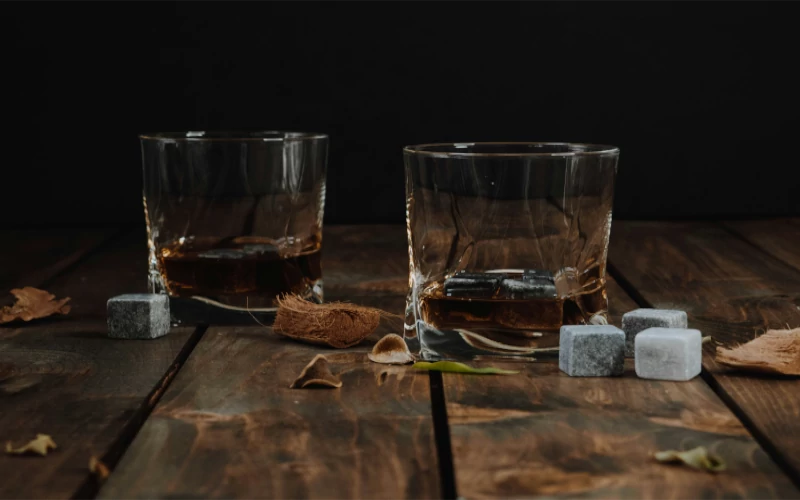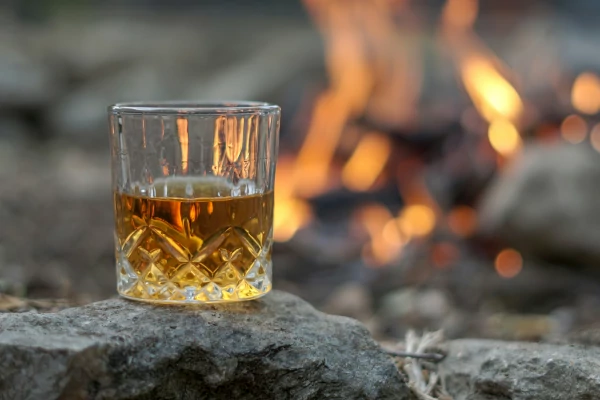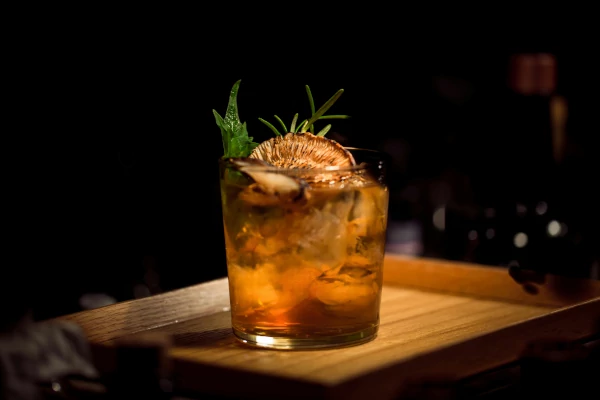Bourbon vs. Scotch: A Tale of Two Whiskeys

Bourbon and Scotch are two iconic whiskeys with distinct production methods, flavor profiles, and cultural significance. While bourbon is sweeter and richer with a bold American heritage, Scotch is more complex and earthy, representing centuries of Scottish tradition.
When it comes to whiskey, few spirits command as much respect and admiration as bourbon and Scotch whisky. Both have a rich history, unique production processes, and a passionate following around the world. Yet, despite being cousins in the world of whiskey, bourbon and Scotch are as distinct as they come. From the grains used to the climate in which they're produced, these two iconic whiskies offer a world of differences that every whiskey drinker should appreciate.
In this article, we’ll take a deep dive into the world of bourbon and Scotch, exploring the production processes, flavor profiles, and cultural significance behind each.
In this article, we'll compare and contrast rum and whiskey in terms of their flavor, production methods, and history—helping you understand what makes each spirit special and how to best enjoy them.
It is advisable to have alcohol/liquor drinking license in Maharashtra. You can apply online for alcohol/liquor drinking liquor license here : Click Here to Apply Now
1. The Production Process: A Tale of Two Distilling Traditions
Bourbon: A True American Spirit
Bourbon is America's native whiskey, and to be legally classified as bourbon, it must be produced in the United States and adhere to strict regulations. These regulations set bourbon apart from other types of whiskey.
a. Grains: By law, bourbon must contain at least 51% corn, which gives it a sweeter profile. The remainder of the mash bill (the grain mix) can include barley, rye, and wheat. This heavy corn base is responsible for bourbon's signature sweet and rich flavor.
b. Distillation & Aging: Bourbon is distilled to no more than 160 proof (80% alcohol by volume) and must be aged in new, charred oak barrels. The charring process caramelizes the sugars in the wood, giving bourbon its distinct smoky, vanilla, and caramel notes. Bourbon must be aged for a minimum of two years to be labeled straight bourbon, though many premium bourbons age for 6-12 years or longer.
c. Climate: The aging process for bourbon happens in the temperate climate of the U.S., particularly in regions like Kentucky, where temperature fluctuations cause the whiskey to expand and contract within the barrel, which accelerates the interaction with the wood. This gives bourbon a fuller, sweeter, and often more intense flavor.
Scotch: The Quintessential Scottish Spirit
Scotch whisky, or simply Scotch, has a storied history that dates back to the 15th century. It’s a product of Scotland and must adhere to strict regulations set by the Scotch Whisky Association (SWA).
a. Grains: Scotch whisky is typically made from barley, though it can also contain other grains like corn, wheat, or rye. The two main categories of Scotch are Single Malt Scotch, made entirely from malted barley at one distillery, and Blended Scotch, which combines malt whiskies with grain whiskies.
b. Distillation & Aging: Scotch whisky must be distilled to no more than 190 proof (95% alcohol by volume) and aged in oak casks for at least three years. Unlike bourbon, Scotch is often aged in used barrels, frequently those that have held sherry, wine, or other spirits. This contributes to Scotch’s more complex and nuanced flavor profile.
c. Climate: Scotland’s cooler, wetter climate means that Scotch ages much more slowly compared to bourbon. The slower maturation process helps preserve the subtleties of flavor, giving Scotch a more refined, earthy quality, with less of the intense caramel sweetness found in bourbon.
2. Flavor Profiles: A Symphony of Tastes
When you take a sip of bourbon or Scotch, you’re immediately greeted by distinct flavors that tell the story of where and how each whiskey was crafted.
Bourbon: Sweet, Bold, and Robust
The dominant flavor in bourbon is sweetness, which comes from the high corn content. This gives bourbon its rich, full-bodied flavor, with notes of vanilla, caramel, oak, and honey.
The charred oak barrels lend bourbon a smoky and sometimes spicy flavor, which can develop into toffee, butterscotch, and baking spices (like cinnamon and nutmeg).
The sweetness of bourbon makes it a popular choice for cocktails such as the Old Fashioned or the Manhattan, where the flavor profile blends well with other ingredients.
Bourbon can range from smooth and mellow to rich and bold, depending on the age and the distillery’s methods. The high sweetness and full-bodied nature of bourbon make it an excellent sipping spirit for those who enjoy a more robust profile.
Scotch: Peaty, Smoky, and Complex
Scotch, by contrast, is more complex and earthy, with flavors that can range from fruity and floral to smoky and peaty. The type of Scotch you encounter will vary greatly depending on where it’s made:
Single Malt Scotch from the Islay region, such as Laphroaig or Ardbeg, is known for its peaty and smoky flavor, which comes from the use of peat fires to dry the malted barley during the malting process. These whiskies have a bold, earthy quality, with flavors of seaweed, brine, and iodine.
Speyside Scotch, such as Glenfiddich or Macallan, tends to be much fruitier and lighter, with notes of apple, pear, and honey, often with a subtle oak influence.
Highland Scotch can be a middle ground, often offering a balanced combination of fruit, spice, and peat, with a bit of floral and honeyed sweetness.
While bourbon is more straightforward in its flavor profile, Scotch tends to be more varied and nuanced, with a broader range of tastes depending on the region and the cask maturation process.
3. Cultural Significance: A Matter of Tradition and Pride
Bourbon: A Symbol of American Heritage
Bourbon has deep roots in American culture, particularly in Kentucky, where about 95% of the world’s bourbon is produced. It’s often considered a symbol of Southern hospitality and pride. The spirit has been intertwined with American history, from its popularity during the American Revolution to the Whiskey Rebellion of 1794.
Bourbon is also a key part of the American cocktail culture, with famous drinks like the Mint Julep, Old Fashioned, and Whiskey Sour showcasing its versatility.
Scotch: The Heart of Scottish Tradition
Scotch whisky, on the other hand, is deeply rooted in Scottish heritage. Distillation methods have been passed down through generations, and Scotch is often regarded as a symbol of Scottish pride. The production of Scotch whisky is protected by law, and the Scotch Whisky Association oversees regulations that ensure the quality and authenticity of the spirit.
Scotch also has a strong connection to Scottish festivals and traditions, such as Burns Night, where the haggis is celebrated with a dram of Scotch whisky. It’s enjoyed across the world, often sipped neat in the traditional Scottish style.
4. Conclusion: Which Whiskey Wins?
The debate between bourbon and Scotch whisky is a personal one. Both spirits offer distinct experiences for whiskey lovers, with each reflecting the culture and craftsmanship of its place of origin.
Bourbon offers a sweeter, bolder, and full-bodied profile that appeals to those who enjoy rich, caramelized flavors. Its versatility in cocktails and its American heritage make it a beloved choice for many.
Scotch, with its complexity, earthiness, and peaty notes, is perfect for those who appreciate subtlety, sophistication, and a greater range of flavor profiles. Whether you prefer the smoky punch of Islay or the fruity sweetness of Speyside, Scotch whisky offers a little something for everyone.
Ultimately, whether you’re sipping a glass of bourbon or enjoying a dram of Scotch, both offer a journey into the world of whiskey that’s steeped in history, culture, and craftsmanship. So, which one will you choose? The answer may depend on your mood, your palate, or simply your sense of adventure. Cheers!
How to get drinking liquor license : Click Here to Apply Now











